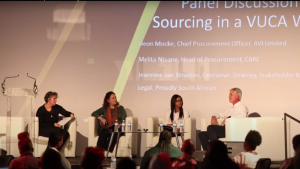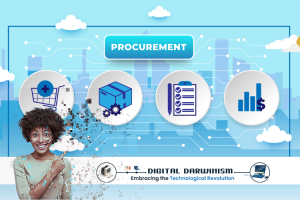 The attractive deals posed by product consolidating vendor/distributors (e.g. Office Supplies and Catering Products) can be just as deceptive as supermarket’s ‘buyonegetonefree’ (BOGOF) pricing, says Wally Johnson, Chairman of Purchasing Index UK, in this month’s SmartProcurement.
The attractive deals posed by product consolidating vendor/distributors (e.g. Office Supplies and Catering Products) can be just as deceptive as supermarket’s ‘buyonegetonefree’ (BOGOF) pricing, says Wally Johnson, Chairman of Purchasing Index UK, in this month’s SmartProcurement.
Awareness of supermarket pricing practices
 “Stimulated by the growing focus of television and newspaper content on the tricks of the retail pricing game, the ordinary UK retail customer has become increasingly aware of the devious pricing strategies of retail suppliers, including particularly those of the supermarkets and the bigger department store chains,” says Johnson.
“Stimulated by the growing focus of television and newspaper content on the tricks of the retail pricing game, the ordinary UK retail customer has become increasingly aware of the devious pricing strategies of retail suppliers, including particularly those of the supermarkets and the bigger department store chains,” says Johnson.
“Over the last twelve months there has been growing public debate across the UK about the pros and cons of BOGOF: the supermarket sales proposition, which, while perhaps attractive to the well-heeled and big spending, price recessive customer, is increasingly being exposed as a ‘rip-off’ of those who only need, or can only afford, to purchase one item, the BOGOF price of which frequently amounts to a premium of 50% over multiple item purchases, and sometimes more!
“There is growing evidence that the ordinary people in the street, supermarkets’ target clients, are increasingly wary of supermarkets’ pricing strategies, and do not like them. Growing numbers of web-based Consumer Support Services have also helped to point consumers to better deals in respect of expenditure which most of us make on insurance and utility purchases. Supermarket pricing strategies have not changed materially in the last decade or so, however, their BOGOF pricing bonanza is not yet over.
“Similarly disquieting pricing practices are employed in the UK department stores sector where, for instance, fashion prices at the height of the season are discounted as the season ends and fall progressively by 25%, 50% and then 75% or more, a practice which reflects exactly how predatory some of their high-season product pricing strategies really are.
B2B and B2G Purchasing
“One might think that the relationships between buyers and sellers in the business to business (B2B) and business to government (B2G) buying/selling game would be more professionally conducted between equally informed and market aware buyers and sellers. Unfortunately B2B and B2G pricing isn’t anywhere as simple as that:
“B2B and B2G pricing is covert (i.e. unpublished), and pricing advantage is still primarily on the seller’s side, particularly when it comes to the bigger corporate purchasing operations such as the UK public sector’s multi-£billion annual spend.
“Worldwide B2B and B2G pricing strategies can be fairly described as convoluted, coercive and even downright misleading. Public sector four-year frameworks with product-consolidating vendor/distributors supplying spend categories such as Office Supplies, Catering Supplies, IT Consumables, etc., offer what might seem in the first instance, to be attractive deals. However, with growing experience of the downsides of their pricing strategies, any buyer who makes an award for, say, a four-year pan public sector framework (the maximum allowable under European trade rules), will soon find (if he/she is at all post-hoc analytical), that the immediate post auction benefits will soon disappear as the supplier endeavours to increase the loss leading prices it had to offer to win the buyer-managed, award-deciding auction. Of course, all of this is done without breaking (or even bending) the terms of the contract that the supplier is awarded.
“The framework arrangements that Purchasing departments worldwide are entering into have the following common features:
• ‘Core listed’ net prices for about 300 commonly used items at somewhere near to value-for-money (VFM) prices, selected (the supplier will claim) to cover 70% of the client’s expected spend over the framework period.
• The balance of the client’s requirement (30%) is priced on a ‘list less discount’ basis, using catalogue prices, which even when reduced by 50% aren’t at all competitive. They can still be 1000% more than VFM prices!
• Annually updated Catalogues, each covering 10 000+ items. (Have you, the buyer, ever tried evaluating or renegotiating 10 000+ prices annually, from each catalogue?)
• ‘Core list drift’: supplier customer support staff apply persuasive influences to your end users, which results in the transfer of your requirements from core listed, net priced items, to discounted, but still inflated and overpriced, list prices.
• Personalised catalogues for substantial individual clients. The catalogues look the same but the prices in them aren’t!
“Buyer management of the prices on a four-year framework based on the kind of arrangement outlined above is next to ‘mission impossible’.
Caveat Emptor
“Occasionally I reflect on the rational and genuinely interested suppliers I’ve dealt with over the last few decades and I have a growing feeling that sellers too are becoming unhappy about the ‘make or break’ contract awarding strategies of big Purchasers, such as those we have in the UK public sector, where four-year frameworks for the successful tenderer mean that those who don’t win the auction have to wait four years for the next chance to get public sector business in that spend category. The successful tenderer who was ‘ground down’ during the auction into offering rock-bottom, lower prices soon begins to recognise – post auction – that they could face further mini competitions (a relatively new OJEU approved, additional competitive process), from end users of the framework who together are big enough and have the choice to increase competition whenever they want to.
“Until recently I thought the Purchasing profession had distanced itself from making suppliers ‘partners for life’, until a particularly effective buyer acquaintance of mine commented that he thought a less confrontational attitude to suppliers would deliver more competitive prices in the long run! What do you, the reader, think? Does the kind of award process I’ve just described happen in South Africa? Is the Volume Leveraging process seen as a ‘must do’ to deliver budget-balancing savings to the South African public sector? Is it too late to change the way we are currently doing these things before the countdown to the next recession? These are the questions that all buyers must now address.
Wally Johnson will be speaking at SmartProcurement’s 3rd Annual SmartSourcing Conference being held at Leriba lodge, Centurion on November 10 and 11.
For more information on supplier pricing strategies, please email wally Johnson at wally@pricetrak.com.

























